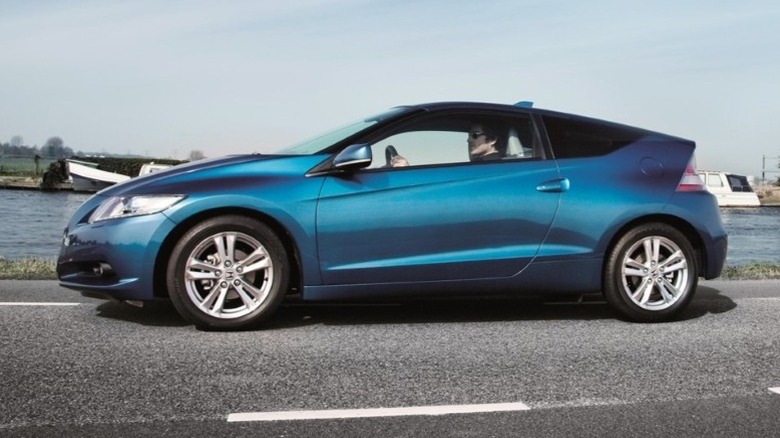What Does The 'Z' In Honda's CR-Z Model Mean?
After years of building hybrid passenger cars such as the Insight and Civic Hybrid, Honda decided in 2010 to add the two-seater CR-Z sports car to its hybrid production line. The Honda CR-Z was touted as a cross between the fuel-efficient Insight and the sporty Honda CRX. Its average CO2 emissions of 188 grams per mile, or 117 grams per kilometer, according to Honda – mean it produces 35 g/km, or 56 g/mile lower CO2 emissions than an eighth-gen Honda Civic with the 1.8-liter four-cylinder engine.
Its powertrain pairs a 1.5-liter i-VTEC four-cylinder engine sourced from the Honda Fit with a 10-kilowatt electric motor. Together, they generate 122 horsepower and 128 lb-ft of torque, with that output making its way to the front wheels through a standard six-speed manual transmission. CR-Z models equipped with the available continuously variable transmission (CVT) make similar power but produce less torque, at 123 lb-ft.
Although Honda later made a midlife update to the two-seat hatchback for 2013, output remained modest, rising only slightly to 130 hp and 140 lb-ft of torque (127 lb-ft with the CVT). Despite being underpowered, the CR-Z remained an interesting car from a design standpoint. Those who have seen it may have also wondered what its name means. CR-Z as used on the Honda car stands for Compact Renaissance Zero, but what exactly does zero imply?
What does zero mean on the Honda CR-Z?
The word zero can mean different things. However, when used in relation to the Honda CR-Z, it means point of origin. It underscores Honda's return to its roots of making economy cars with an equal dose of sporty performance and good fuel economy, plus "without being bound by the values of traditional coupes," according to the Japanese automaker.
While the sporty bit wasn't quite up to snuff, the CR-Z did deliver on its compact car promise. It was underpinned by a modified version of the Honda Insight platform, but its 95.9-inch wheelbase was shorter and wider than the Insight's. Honda also lowered the CR-Z's height by 1.2 inches for an improved center of gravity. Overall, the CR-Z measured 160.6 inches long, 68.5 inches wide, and 54.9 inches tall, making it quite compact.
As for fuel economy, CVT-equipped Honda CR-Z models returned a respectable 35 mpg in the city, 39 mpg on the highway, and 37 mpg combined. If you stick with the standard manual six-speed, fuel economy drops to 31 mpg city, 37 mpg highway, and 34 mpg combined.

